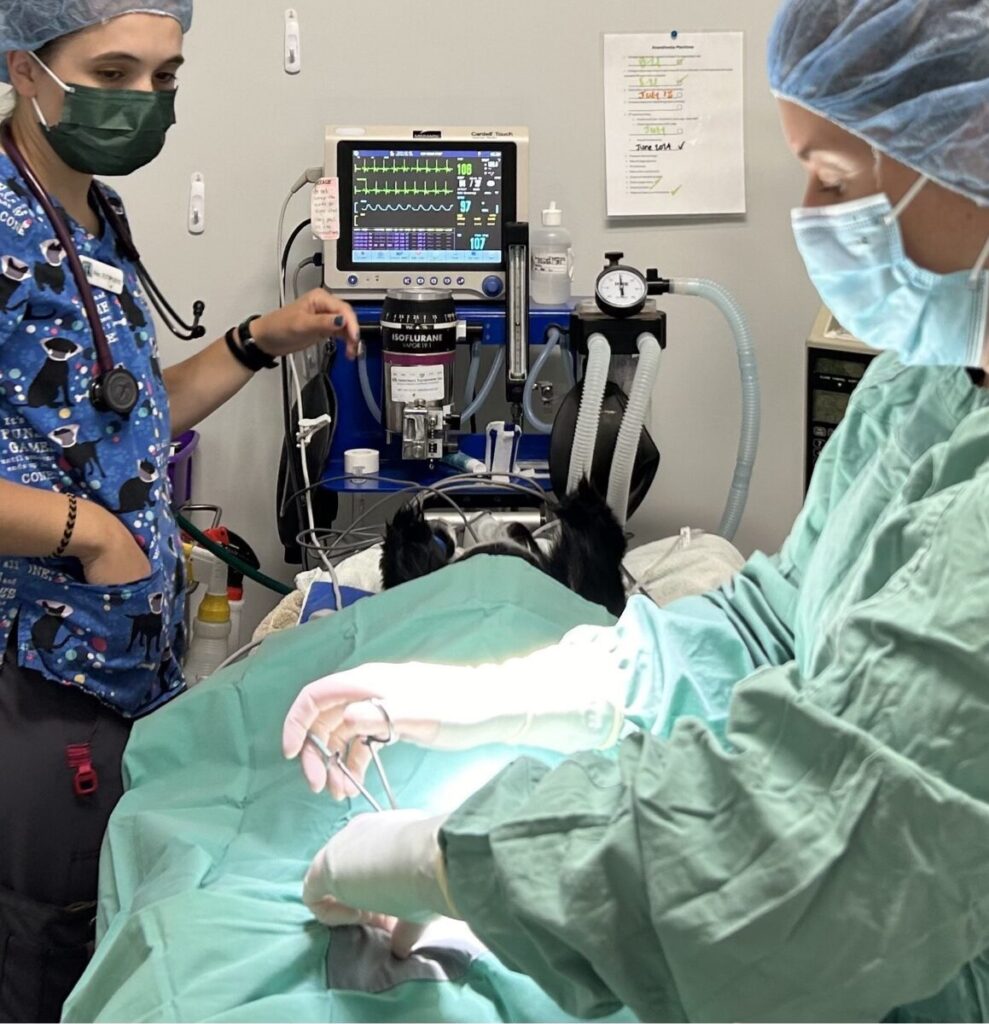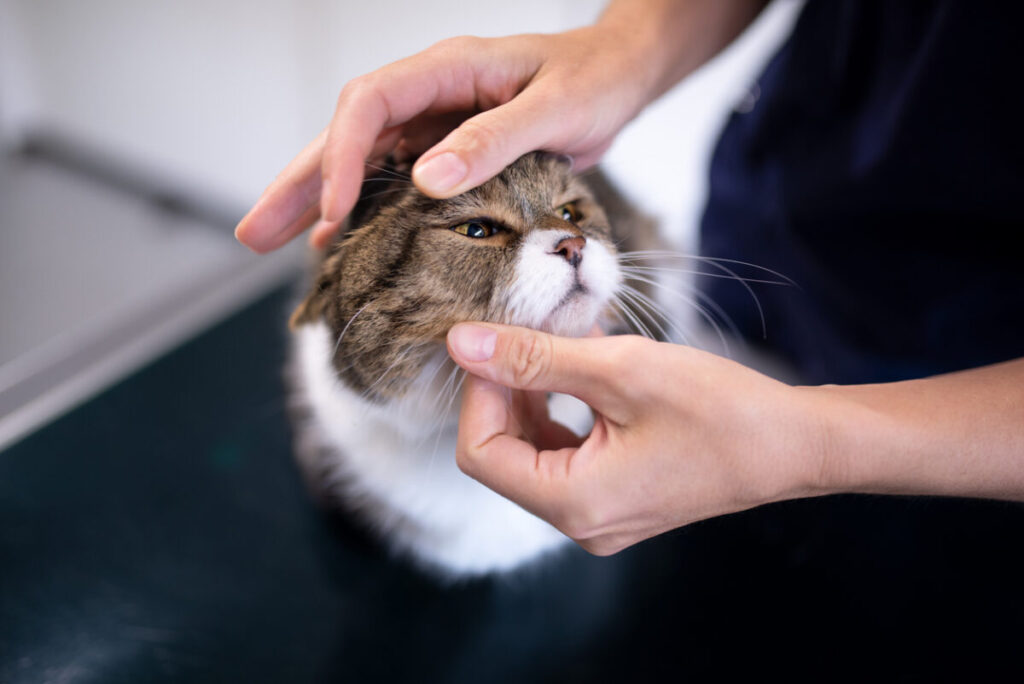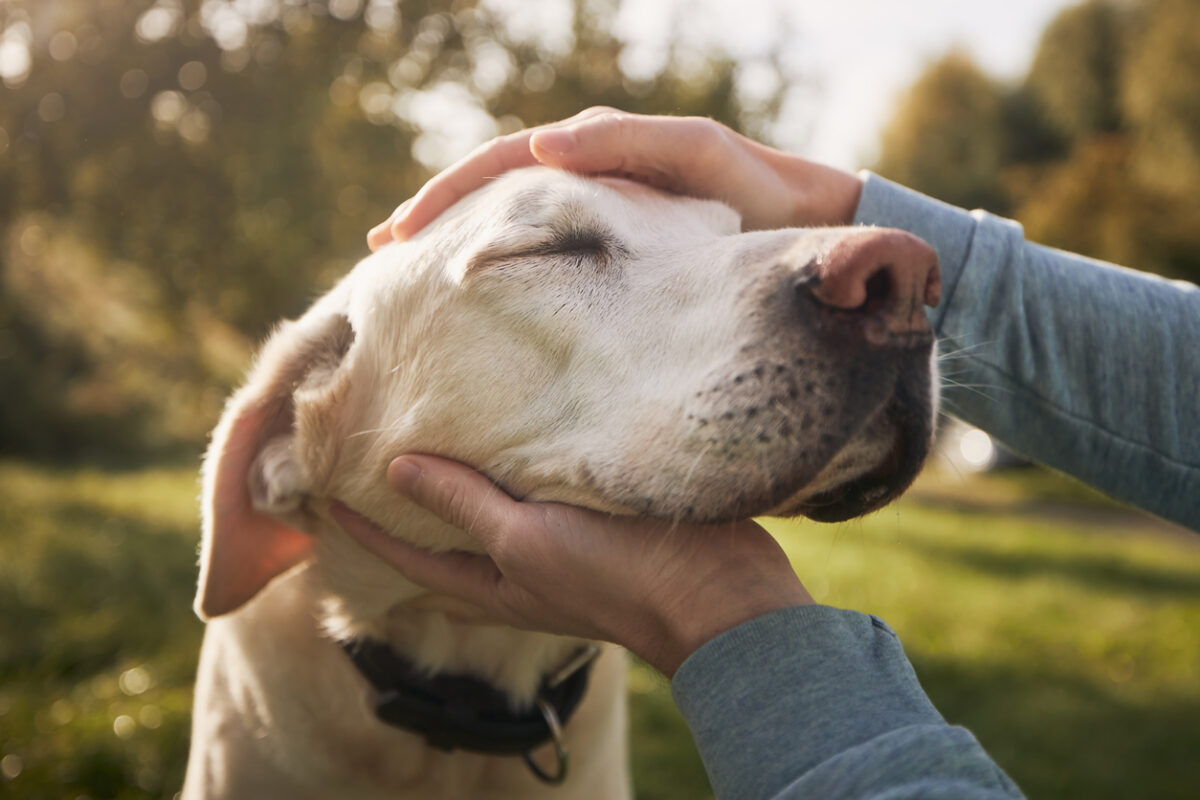Finding a lump on your pet can be alarming. However, discovering a lump on your pet or growths on or below the skin is common in dogs and cats and does not always signal bad news. Although less common, lumps can also occur in exotic pets. This blog will discuss the different types of lumps and when they require veterinary attention. You will learn how soft tissue surgery can be a vital solution for removing them. We will also explore the importance of blood work before surgery and how pre-anesthesia can ease your pet’s anxiety, especially in a Fear-free environment.
Benign Lumps on Your Pet
There are various types of lumps you might find when checking for a lump on your pet. When you find one, your first reaction might be to panic, thinking it could be cancer. However, many types are benign (non-cancerous), which our Cinema Vet veterinarians can treat or remove surgically. Here are some common types you may encounter on your pet:
Skin Tags
These harmless growths often appear on the skin’s surface, usually on a stalk. Pets, like people, can have single or multiple skin tags on their chest, legs, face, back, armpits, or other areas. They are more common in large-breed dogs but can develop in any breed. Surgical removal is rarely necessary unless your pet begins to chew or scratch them, causing them to bleed.
Lipomas (Fatty Tumors)
Lipomas are non-cancerous fatty tumors that are usually soft, moveable, and just under the skin. While they can grow quite large, they generally don’t require treatment unless they interfere with your pet’s movement.
Sebaceous Cyst
Sebaceous cysts are large pimples on your pet’s skin caused by clogged oil glands. While harmless, they can become inflamed and sore if they rupture, releasing a white to cream-colored cheesy-looking material. In some cases, ruptured cysts can cause significant inflammation or infection. Surgical removal is typically only necessary if the cysts repeatedly clog, rupture, or irritate your pet.
Histiocytoma
This benign tumor commonly affects pets under a few years of age. Histiocytomas are small, firm, button- or dome-like bumps on the skin’s surface, often found on the face, ears, feet, and front legs. These masses originate from immune cells that protect tissues in contact with the environment. They typically go away on their own within a few months, but surgical removal is an option if they persist.
When Surgery is Necessary

Photo: Preparing a pet for surgery at Cinema Veterinary Services
While many of these growths are benign, there are cases where surgical removal is necessary, especially if they are causing discomfort, restricting movement, or have the potential to be malignant. Cinema Veterinary Centre specializes in soft tissue surgery, which removes non-bony tissues such as skin, fat, and muscle. We commonly use this surgery to remove a lump on your pet and other abnormal growths from their body.
Soft tissue surgery is not limited to cats and dogs; it is also an essential treatment option for exotic pets, including rabbits, mice, guinea pigs, and other small animals. Due to their unique anatomy and size, surgery on exotic pets requires specialized skills and techniques to ensure their safety and well-being. Our experienced veterinarians handle these delicate procedures, using advanced techniques to minimize risks and promote faster recovery.
What is Soft Tissue Surgery

Photo:Dr. Jaimie Ronchetto performing soft-tissue surgery
Soft tissue surgery is a delicate procedure that requires precision and care to remove the growth altogether while minimizing damage to the surrounding healthy tissue. Our experienced veterinarians use advanced techniques and equipment to safely perform these surgeries, reducing the risk of complications and promoting quicker recovery for your pet. By removing these growths, we not only address any immediate concerns, such as discomfort or impaired mobility, but we also prevent the potential spread of malignant cells, ensuring your pet’s long-term health and well-being.
The Importance of Blood Work Before Surgery

Photo:Lab room at Cinema Veterinary Centre
We perform thorough blood work before any surgical procedure, including removing any growths. This step is crucial to assessing your pet’s overall health and ensuring they are fit for surgery. Blood work helps identify any underlying conditions that could affect anesthesia or the healing process, allowing us to tailor the anesthesia and surgical approach to your pet’s needs.
Pre-Anesthesia: Easing Anxiety for a Fear-Free Experience
As a Fear Free practice, we recognize that the surgical experience can be a source of stress and anxiety for pets. To address this, we prescribe pre-anesthetic medication to be administered by pet owners the night before and the morning of the procedure. This proactive approach helps pets arrive at our clinic more relaxed and better prepared for anesthesia and the temporary disruption to their daily routines. By reducing anxiety, we often find that less anesthesia is required, which in turn enhances pain management during and after the procedure. This method has proven to be highly effective in optimizing the outcomes of soft tissue surgeries and other procedures, allowing us to provide your furry loved ones with the highest care
How to Check for Lumps on Your Pet

Regularly checking your pet for lumps on your pet is critical because early detection can significantly impact the treatment outcome, especially if the lump on your pet is malignant growth.
Your pet’s fur can make it difficult to see any lumps, bumps, or growths, so it’s essential to run your hands over their entire body regularly, feeling for anything unusual. Also, check inside their mouth if you can do so safely, as oral lumps can sometimes go unnoticed. We recommend performing these checks at least once a month to stay on top of your pet’s health.
Our veterinarians will also thoroughly examine your pet for any abnormal growths during regular checkups. If we find any, we’ll explain the procedure for diagnosing and treating the growth, ensuring your pet’s health and comfort. Early detection and professional evaluation are crucial to effectively managing your pet’s well-being.
Managing Lumps, Bumps, and Growths in Exotic Pets
Managing a lump on your pet, especially in exotic species, may require a different approach compared to dogs and cats, primarily due to your exotic pet’s unique anatomy, size, and physiological differences.
1. Species-Specific Diagnosis
Exotic pets like rabbits, guinea pigs, reptiles, and birds often require specialized diagnostic techniques. For example, imaging like X-rays or ultrasounds might need to be adjusted to suit smaller or more delicate animals. Fine-needle aspiration (FNA) or biopsies can be more challenging in smaller pets due to their size and the potential stress it can cause.
2. Non-Invasive Monitoring
In some cases, especially with smaller exotic pets, the approach might be more conservative. If the lump is benign and not affecting the pet’s quality of life, regular monitoring and observation might be recommended.
3. Surgical Considerations
Anesthesia in exotic pets carries higher risks due to their small size, unique metabolic rates, and susceptibility to stress. Special anesthetic protocols, including gas anesthesia and careful monitoring of vital signs, are often used to minimize these risks.
4. Post-Surgical Care
Post-operative care for exotic pets often involves specialized attention. For example, rabbits are prone to gastrointestinal stasis after surgery, so particular feeding protocols and close monitoring are required. Pain management and warmth are also crucial, as these animals can quickly become hypothermic or stressed.
5. Diet and Environmental Management
For some exotic pets, dietary changes can help manage or reduce the likelihood of certain types of lumps or growths. For example, ensuring proper calcium levels in reptiles can prevent certain types of growths related to metabolic bone disease.
6. Environmental Enrichment
Providing an enriched environment that reduces stress can also be significant, as stress can exacerbate health issues in exotic pets, including developing certain growths.
7. Holistic and Supportive Care
We may recommend herbal or nutritional supplements tailored to the specific needs of the exotic pet, especially if the growth is not immediately threatening and surgery is not the best option.
8. Minimizing Stress
For species like birds, minimizing stress through proper handling, environmental modifications, and social interaction can be crucial in managing health issues, including lumps and growths.
Play it Safe: Schedule an Appointment
Taking a proactive approach to your pet’s health is crucial when managing lumps and growths. By staying vigilant and regularly checking your pet, you can catch potential issues early and seek timely veterinary care. Whether it’s a benign skin tag or a growth that requires surgical intervention, understanding the options available, including soft tissue surgery and specialized care for exotic pets, ensures your pet receives the best possible treatment. Remember, early detection and intervention can significantly affect your pet’s health and quality of life. Schedule an appointment with Cinema Veterinary Centre if you have any concerns, and let us provide the expert care your furry, feathered, or scaly friend deserves.

